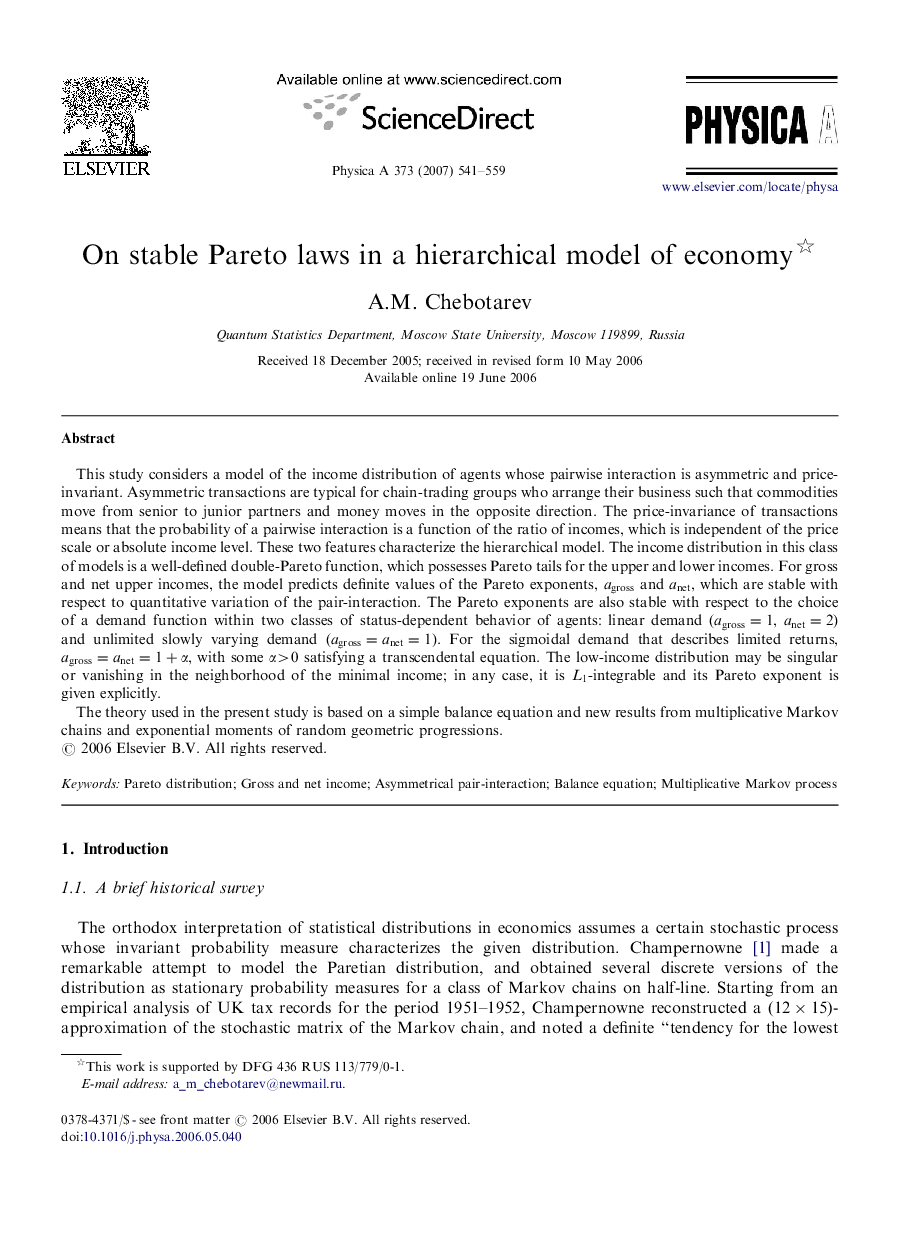| Article ID | Journal | Published Year | Pages | File Type |
|---|---|---|---|---|
| 978371 | Physica A: Statistical Mechanics and its Applications | 2007 | 19 Pages |
This study considers a model of the income distribution of agents whose pairwise interaction is asymmetric and price-invariant. Asymmetric transactions are typical for chain-trading groups who arrange their business such that commodities move from senior to junior partners and money moves in the opposite direction. The price-invariance of transactions means that the probability of a pairwise interaction is a function of the ratio of incomes, which is independent of the price scale or absolute income level. These two features characterize the hierarchical model. The income distribution in this class of models is a well-defined double-Pareto function, which possesses Pareto tails for the upper and lower incomes. For gross and net upper incomes, the model predicts definite values of the Pareto exponents, agrossagross and anetanet, which are stable with respect to quantitative variation of the pair-interaction. The Pareto exponents are also stable with respect to the choice of a demand function within two classes of status-dependent behavior of agents: linear demand (agross=1agross=1, anet=2anet=2) and unlimited slowly varying demand (agross=anet=1agross=anet=1). For the sigmoidal demand that describes limited returns, agross=anet=1+αagross=anet=1+α, with some α>0α>0 satisfying a transcendental equation. The low-income distribution may be singular or vanishing in the neighborhood of the minimal income; in any case, it is L1L1-integrable and its Pareto exponent is given explicitly.The theory used in the present study is based on a simple balance equation and new results from multiplicative Markov chains and exponential moments of random geometric progressions.
